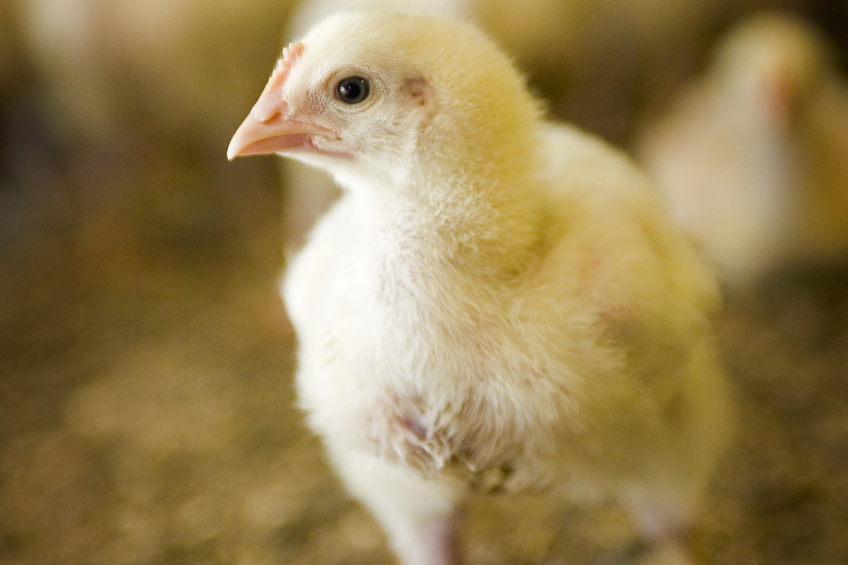Handling and storing of poultry vaccines

For the proper vaccination of birds, the application process is a complex job. Yet it all starts with properly handled and stored vaccines. Mistakes made pre-vaccination can cost dearly so handle with care and monitor every step is the message.
With current day expertise in vaccine manufacturing and packing, one could safely assume that any vaccine, when it is delivered to the poultry operation, is in top-notch condition; and so it should be. The challenge at the hatchery or poultry operation is to maintain this condition. The on-site storing and handling of products that the operation depends on requires maximum attention. It keeps the business running with continual, optimum immunity levels among the poultry stock.
The basics
Photo: Bert Janssen
Good procedures key
When a vaccine is to be taken from the holding fridge for use in the hatchery or taken to another production facility, such as a chicken growing or rearing house or a house with layer breeders or commercial egg layers, the following procedure should apply. The vaccine is usually transported in an insulated cooler box or bag. Always ensure that the vaccine is never exposed to direct sunlight or ultraviolet light. A common error is the incorrect packing of vaccines in cooler boxes. This needs to be done correctly, as follows.
- Good procedures are the key to transporting vaccines successfully. The insulated cooler box or bag should first be pre-chilled before the vaccine is introduced, as the ice packs come out of the freezer at -20° C and the vaccine is vulnerable to freezing. Keep the ice packs at room temperature for 30 to 60 minutes, depending on the internal temperature and humidity of the room .
- A good rule of thumb is to wait until beads of water cover its surface. The pack is now “Conditioned” and can be dried off with a cloth and put into the cooler box. It is now almost ready for successful transport, though it is advisable to add a temperature monitoring device.
- A digital minimum-maximum thermometer with a sensor, which should be placed in the centre of the vaccine package, is the way to go. For long trips lasting several hours, it would be advisable to take a reading to ensure that the correct temperature is being maintained.
- Good practice is to loosely wrap the vaccine ‘package’ before placing it in the cooler box. This can be done using some bubble wrap or, if not available, shredded paper, thus allowing cool air circulation around the vaccine vials. It will also minimise the risk of any hot or cold spots.
Arrival at destination
When arriving on site, first check the temperature. This should be in the same range between +2° C and +8° C. This will ensure that the potency has been retained. Depending on the length of the journey, it may be necessary to have replacement ice packs on hand that have already been ‘conditioned’ (in a separate cooler). Each facility at which a vaccine is to be administered should have a small fridge with freezer where ice packs can be stored for use when required. It is imperative that this is organised beforehand by the staff. One person should be responsible for this task and know exactly the dates for each vaccination.
The vaccine should never be stored in refrigerator doors, as the temperature tends to be higher there. It is good practice to place bottles of water in the doors, as this will lead to a more even temperature throughout. The lower shelf can be used for this if there is no storage in the doors, as in some fridges.
The bottles of cold water will help keep the fridge cooler for longer should a power cut occur. Keep vaccines of the same type together to avoid the chance of them being mixed. Vaccines should be placed on the middle shelves to allow air to circulate. Data loggers can be used to record fridge temperatures and are very useful, since it provides a historical account of what happens. The information is usually downloaded onto a computer and stored there.
Contingency
Plan in advance for the worst. To reduce risks due to power cuts, use a stand-by generator (petrol). Electricity disruptions for 3 to 4 hours should not pose a problem for a good quality fridge, but after that the vaccine quality can be impaired.
Pre-check list
During the application of the vaccine, it is important to protect the vaccine. You should ensure that the correct amount of vaccine required is packed (including any necessary diluent).
Only pack the amount that you expect to use and maintain the correct temperature (+2° C to +8° C). Record temperature readings in the cooler and minimise the number of times the cooler is opened while in the house. The temperature readings inside the cooler should be taken before transport to the vaccination site, on arrival at the vaccination site and when the vaccination has been completed. With strict biosecurity in mind, it is inadvisable to bring any unused vaccine back to the original building or even to attempt or think of putting it back into the fridge. If accurately worked out, there should be zero excess and, if deemed necessary, one extra vial can be included for cases of ‘mishap’ and, if not used, can be disposed of in a designated ‘disposal area’ before returning to base.
If there is any doubt about anything concerning the vaccine, always consult your vaccine supplier / distributor. It is
advisable to keep their contact names and numbers on your refrigerator door. If you do not have 100% confidence in the vaccine procedures, rework them and use the expertise of the supplier. Organise a visit to the facility to explain and show staff all that is required for this important aspect of the production chain.
You can find more interesting articles from World Poultry issue 4 in the digital magazine, simply log in or register for free.














